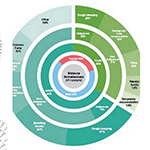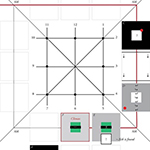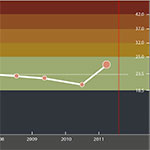Volume VI, Issue 3
For this issue of PJIM we’ve covered the range of design process—from purely experimental to hard deliverable. Information design functions at varying and fairly transdisciplinary levels. The information design process begins (one might say) at the level of personal interpretation with the mapping of concepts and the stories these concepts tell and concludes (again, arguably) with applied heuristics—a total focus on the user in the most objectively possible manner. Across these two aspects are the many areas of development, investigation, exploration, process, and execution. It is the range of ultimate intention which lends the crucial difference between them—sometimes this intention is derived quickly by the pattern that the information will take at the outset; sometimes it is a long, investigative process that leads to the discovery of the pattern that best represents the underlying data that needs to be conveyed.
In this issue, one investigation is purely experimental and designer-centric—the visual mapping of Mysterious Island (L'Île mystérieuse) the novel by Jules Verne. At the other extreme, we present a project undertaken at our PIIM labs toward a highly user-centric and purposeful outcome. This is a program entitled “Healthboard,” and it tackles the complexity of streamlining the information that supports the healthcare provider and patient relationship toward more efficient and effective healthcare provision. Between these is an article of great utility—showing how the attitude of how communicating data can be creatively embedded in design and toward socially focused outcomes. All three articles are heavily supported by details of the process and procedures that lead to the outcomes provided. In one example the designer(s) working independently, in the next the process of working within a professional research organization, and the third in the educational, student development level. We feel these three articles provide a window into process and outcomes that will be of great interest to our readers.
Jihoon Kang, Publisher, and William Bevington, Editor-in-Chief
Parsons Journal for Information Mapping

Synthesizing Form And Data: Developing Practices For Student Engagement And Learning
by Jen Seevinck, PhD, Jeremy Kerr, PhD

Experiments in Literary Cartography: The Isle-to-Isle Project
by Sherylene Chew, Berny Tan

Healthboard: A Graphic User Interface for Patient Centered Healthcare, the “Medical Home” Solution
by Jihoon Kang, MFA

